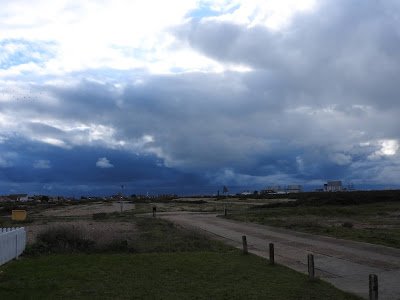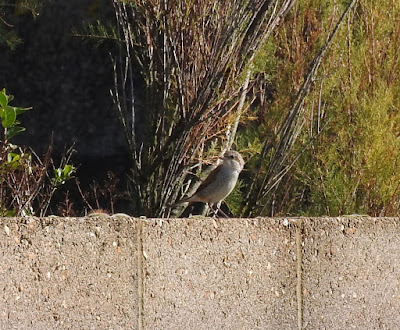Lade - cold and sunny, nw 2 - Well what a year it has been! It started off so promising here at Plovers with a full program of wildlife tours planned for our guests throughout the spring and summer seasons, until the virus struck and the whole lot were cancelled. Along with many others in the leisure sector it has certainly been a tough year, but nowhere near as tough as those frontline workers battling the virus in hospitals and care homes across the country, heroes every one of them. So, in retrospect we have been fortunate down here throughout this crisis, along with its various lockdowns, to still have access to the Dungeness NNR with its wealth of flora and fauna; and there certainly were some memorable moments.
Spring Wheatears, Lade beachOn the birding front I managed to clock up 216 species of birds across the peninsula during 2020, which is about average for me with only a few seabirds missing, mainly due to the Estate being closed in the first lockdown. Notable spring raptors included Sea-eagle sightings from the Netherlands population, decent numbers of Red Kites and Ospreys on passage, a Red-footed Falcon on Dengemarsh and several Black Kites through. The heron tribe once again featured well with Great White and Cattle Egrets and Glossy Ibis throughout, while spring `overshoots` included Black-winged Stilt, Purple Heron, Bee-eater, several Short-toed Treecreepers and a Rosy Starling at Lydd, part of a nationwide influx. As over 100 pairs of Common Terns settled down to breed on Burrowes and ARC two Whiskered and a Gull-billed Tern briefly added some glamour to proceedings.
Rosy Starling, LyddWillow Warbler, Spotted Flycatcher, Redstart and Whinchat were in short supply on spring passage, in contrast to Sedge Warblers and Whitethroats that seemed to be everywhere. With restricted access to parts of the bird reserve, and the hides closed throughout, wader-watching proved difficult, although plenty of Whimbrels could be seen and heard passing overhead during spring and autumn. Migrant Woodlark and Nightingale were noted at Lade and Cuckoos bred again, where there was also good numbers of grounded Yellow Wagtails and Wheatears on the desert in late summer.
Red-flanked Bluetail, DungenessAutumn was notable for a rash of rare warblers including Pallas`s, Hume`s, Dusky and Yellow-browed at DBO, plus a sensational Red-flanked Bluetail, which was also part of an unprecedented influx across eastern Britain. Classic `drift` migrants such as Pied Flycatchers, Ring-Ouzel, Red-backed Shrike, Wryneck and Shore Lark enlivened the season as the first of the finches and thrushes arrived from the east and a late Dusky Warbler took up residence in the scrub around the ARC car park.
Summer Solstice 2020However, the most memorable outing of the year for me was midsummer morning spent on the bird reserve with our Lucy watching the sun come up along with a cacophony of bird song and a Barn Owl hunting close by. A couple of hours later we sat overlooking the wetlands at Dengemarsh soaking up Bittern `booming`, Marsh Harriers food-passing and a singing Savi`s Warbler, a new species for me at Dungeness, pure magic.
The New Year beckons and although the first couple of months could be grim, hope springs eternal as the vaccines are rolled out, so stay safe and good birding to one and all for 2021.




















































